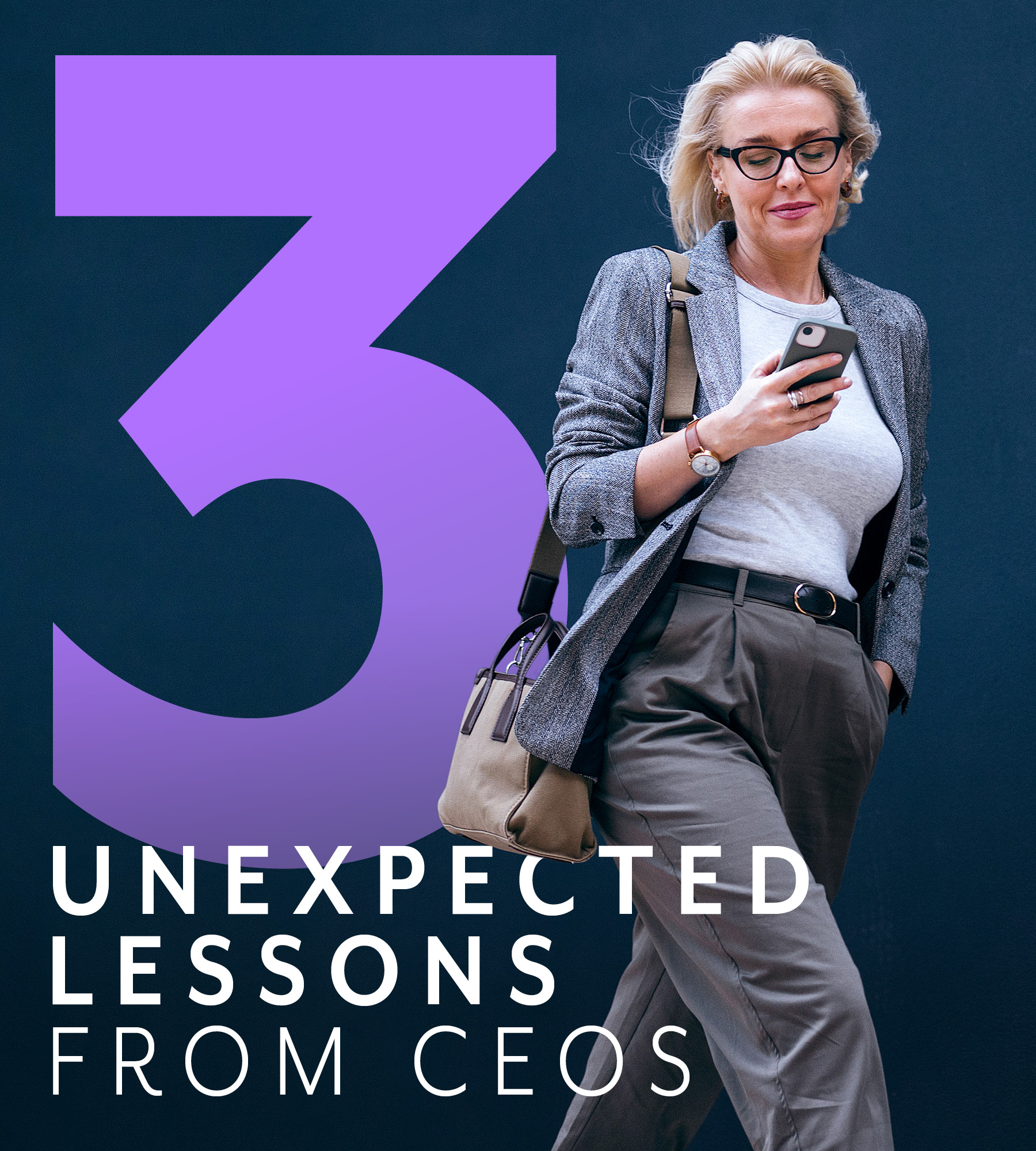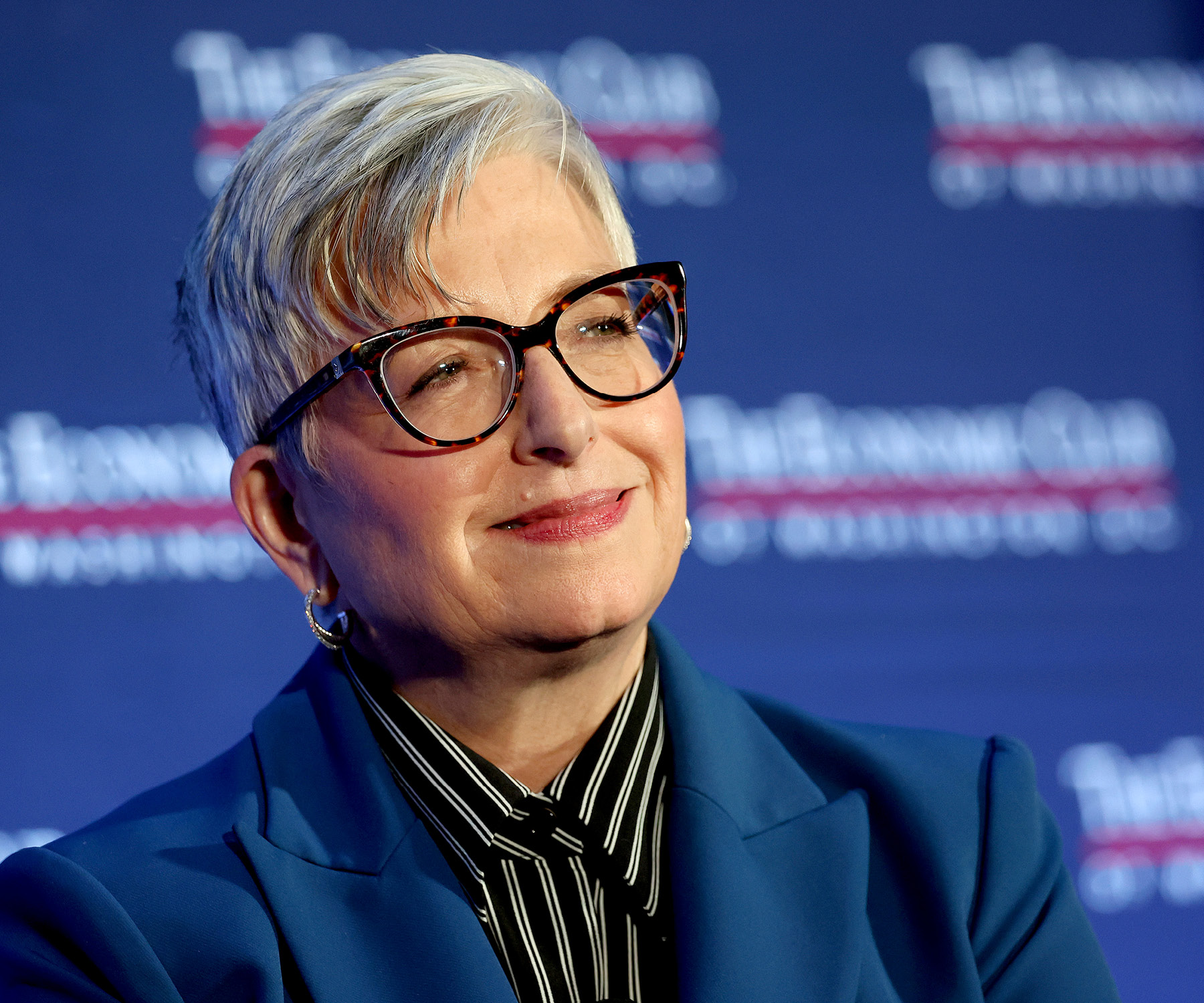Language
You can read the magazine in one of the following languages
Geolocation
You can read the global content or the content from your region

In my role as Global Lead for Russell Reynold Associates’ CEO and Executive Transition program, I have the benefit of access to CEOs, boards and executives of some of the world’s largest companies.
While this access is generally as a trusted advisor to leaders as they navigate their transitions into a new role, as part of the work writing my upcoming book The New CEO, it has also recently included comprehensive interviews with many illustrious CEOs.
These included Ramon Laguarta (PepsiCo), Carol Tomé (UPS), Hans Vestberg (Verizon), Marc Bitzer (Whirlpool), Mark Clouse (Campbell), Doug Mack, former CEO of Fanatics and Ronald Williams, former CEO of Aetna and the current Director of Johnson & Johnson and American Express.
Time spent with leaders like these is a privilege under any circumstances, and while my conversations were generally confidential, in this case I am able to share some of the valuable lessons and experiences awarded to me.
Here are three lessons these highly regarded CEOs shared about their transition into the CEO role.
Ascending to the top job is a monumental transition. As Ramon Laguarta, CEO of PepsiCo, told me, “You think you know what it will be like, but you don’t. It’s a massive shift.”
The Spanish native has served as CEO of the soft drinks giant since 2018, after more than 25 years working across the company’s European and North American divisions. He’d seen every corner of PepsiCo, working through periods of stability, as well as turnarounds and acquisitions, yet becoming CEO still presented new unknowns.
“The experiences I had from growing up in PepsiCo were very helpful,” Laguarta reflected. “But when you become CEO, you find certain things are totally different to what you know.”
One of these is the realization that you are the ultimate decision-maker. “When you’re running a business unit or region, you can always ask your boss to carry the ball the last mile,” he said. “But now you are the one who has to make the final call.”

“The experiences I had from growing up in PepsiCo were very helpful. But when you become CEO, you find certain things are totally different to what you know.”
– Ramon Laguarta
“Managing the board, the media and investors – that’s also new. Even if you have been exposed to them, you are not exposed the way you are when you are the CEO.”
There’s also the challenge of being the ultimate driver of a new strategic vision. For Laguarta, this means pivoting PepsiCo toward accelerated growth, embracing a new corporate mission and vision, and positioning the company to becoming ‘faster, stronger, better’.
“Even on the things that you think you know operationally, there’s a step up in complexity,” he said. “You’re dealing with the globe versus a particular region, function or category. Then there’s the time horizon. When you’re running a business unit or region, you’re rarely thinking five years out; you’re thinking one-to-two years maximum, and you’re much more focused on delivering now. As CEO, it’s five-years-plus.”

Throughout your CEO transition, you may find yourself feeling exposed and vulnerable, even weak as a leader. When you begin as CEO, you can quickly move from a position of strength, one where you have been performing at your best, to a position where you can feel out of your depth.
This loss of capability can rock your confidence and self-esteem. It can be hard to find ways to steady yourself.
Of the many misconceptions about the role of CEO, the one about it being extremely lonely, unfortunately is not one of them. This is what CEOs most frequently tell me when I ask them what the hardest adjustment is about the role.
Carol Tomé was warned before taking the helm of global shipping company, UPS, that she would feel lonely. She wasn’t fazed.
“I would say, ‘How lonely can it really be? It can’t be that lonely?’ What I’ve since learned is that it is extraordinarily lonely,” she laughed.
“When you are a member of an executive team, you hang together. Now, my executive team will wait for me to leave a meeting so that they can debrief together. It’s the reality and you have to get used to it. But it is super lonely.”
Being CEO can be like being alone in a crowd and this loneliness can manifest in different ways. It’s lonely intellectually, it’s lonely in what you can and cannot share and it is lonely emotionally.
Sanjiv Lamba, CEO of Linde, is another leader who found the role lonelier than he had expected. “I am the internal candidate, so I should have read the tea leaves,” he told me, with a smile. “But you can’t see it until you are there. It is just the reality of the role.”

“Now, my executive team will wait for me to leave a meeting so that they can debrief together. It’s the reality and you have to get used to it. But it is super lonely.”
– Carol Tomé
He described how, at any given time, he can’t talk to his leadership team about 30–50 percent of the things he’s working on or thinking about, even though he has complete trust in them.
“It’s just the nature of the things that you do as CEO and the decisions you are making,” Lamba explained.
One response is for CEOs to fight to feel part of a team, for that camaraderie, and even wish to be liked. As CEO, you are surrounded by your senior leadership team, but you are not really part of it. You will need to regularly disassociate from the team in order to make the tough decisions that are necessary for your organization to succeed, short-term and long-term.
The other risk is that you isolate yourself, which only blunts your decision-making, as well as your confidence in your decisions. Isolated CEOs can also start to doubt the level of trust and support from those around them. Unfortunately, it can be a downward spiral that makes a tough role even harder.
When I ask these CEOs about the best and worst parts of being CEO, most gave the same answer to both parts of the question: the responsibility.
“You realize there is no-one else,” said Marc Bitzer, CEO of Whirlpool. “I’m responsible not just for financials, but for 60,000 people and their families. The buck stops here. If you think too much about it, it can paralyze you.”
When you are CEO, you are also in charge of making the decisions that no-one else can make – decisions that often have significant ramifications for the future of your organization, its stakeholders and many people’s livelihoods. Yet, it is this total responsibility that most likely drew you to the role in the first place, the part that you accepted without hesitation.
Doug Mack, a three-time CEO, who has recently stepped down from the helm of Fanatics, which manufactures and retails merchandise for global sports fans, described the complexity of the job as sitting at the “pinch of the hourglass”, trying to manage the insatiable expectations coming above from investors and below from employees.
He said, “Only the hard stuff ends up on your desk when you’re CEO. Anything straightforward, fun, or easy is solved by the incredibly talented people you have in your organization.
“All the stuff that comes to you as CEO are things that all those smart people already worked on, debated, tried to figure out, and they couldn’t. When you’re the CEO, you’re signing up for that.”
Of course, if you’ve previously held a C-suite or regional General Manager role, you’ll have already experienced responsibility and accountability, especially around large decisions. You may have been asked to sell-in your point of view or been in the room when the decision was made. But the ultimate decision was made by someone else.

“That’s part of what it means to be a CEO – to create certainty and clarity where there is none.”
– Lyssa McGowan
It’s different when the proverbial buck stops with you – no-one to defer to, no-one to share the responsibility with, and no-one to stand beside you shouldering any negative consequences. What makes this even harder is that many of the decisions you’ll make as CEO don’t have a definitive right or wrong answer as some are judgment calls.
“There’s lots of people to help and advise, but in the end, you have to make the decisions – it’s a weight you can’t put down,” Lyssa McGowan said after her first year as CEO of Pets at Home, the United Kingdom’s leading pet care business.
In her situation, the ‘weight’ includes the jobs of 16,000 people and more than around US$1.9 billion of shareholders’ money.
Before taking over at Pets at Home, McGowan had spent years as a divisional leader at a major telco both as its Chief Commercial Officer and then its Chief Consumer Officer. As accustomed to making large decisions as she was, making them as the CEO was significantly different.
“Every week I’m making decisions where I’ve got three ‘not great’ scenarios and I have to pick the least bad one, or the one that I’m at least 50 percent sure is the least bad one,” she said. “Then I need to perform alchemy and convince 16,000 people it’s brilliant and amazing and we should all follow it. That’s part of what it means to be a CEO – to create certainty and clarity where there is none.
“And when things go wrong now, I no longer have to convince my boss about the next steps, I have to convince myself. And it turns out I’m a lot harder to convince than any boss I ever had.”
To add insult to injury, the type of judgments that CEOs need to make often carry a time horizon that offers little opportunity for short-term feedback on whether you made the right call or not. You may not find out until months, years or even decades later.
It can weigh heavily on your shoulders.

Ty Wiggins
Contributor Collective Member
Ty Wiggins is a leadership expert and author of ‘The New CEO’. He’s passionate about setting up new CEOs for success. As the Global Lead of Russell Reynolds Associates’ CEO and Transitions Practice, Ty helps world-class CEOs successfully transition into the new role, unlocking both business and personal success. For more information visit https://www.russellreynolds.com/en/people/consultant-directory/ty-wiggins